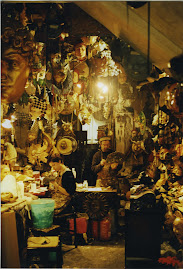
Mardi Gras is celebrated around the world but no one, it is said, does it like New Orleans. Twelfth Night (after Christmas), or January 6th, is when the New Orleans Mardi Gras month-long season begins - and continues until the midnight of Fat Tuesday, 5th February. Fat Tuesday is always the day before Ash Wednesday, and the day after the lesser known Rose Monday.
Mardi Gras parades have been staged in New Orleans since the 1837 (as evidenced by a first newspaper account describing masqueraders "in such grotesque and outlandish habiliments") and in 1857 the modern incarnation of Mardi Gras took shape with the founding of the first Krewe, a kind of official parading organisation. Today there are hundreds of Mardi Gras clubs that continue to conduct elaborate, colourful, outrageous political cabaret throughout the streets of New Orleans.
Katrina Gras - In 2005, after the devastation of Hurricane Katrina, the city opted to uphold its Mardi Gras tradition. Some people objected, but for others it was deemed a "therapeutic antidote" for what was perceived as a woefully inadequate government response to the disaster. Participants reportedly wore blue biohazard suits and blue tarps, and went about portraying blind people while wearing T-shirts that read "Levee Inspector".
('Senior Taco Salsa' is a scarecrow found at the Lawrence Arts Festival, January '08, New Zealand.)
 To see Masking for Clarity: working with Multimask, found objects and light - view http://www.photoblog.com/showoffs/2008/01/27/
To see Masking for Clarity: working with Multimask, found objects and light - view http://www.photoblog.com/showoffs/2008/01/27/








